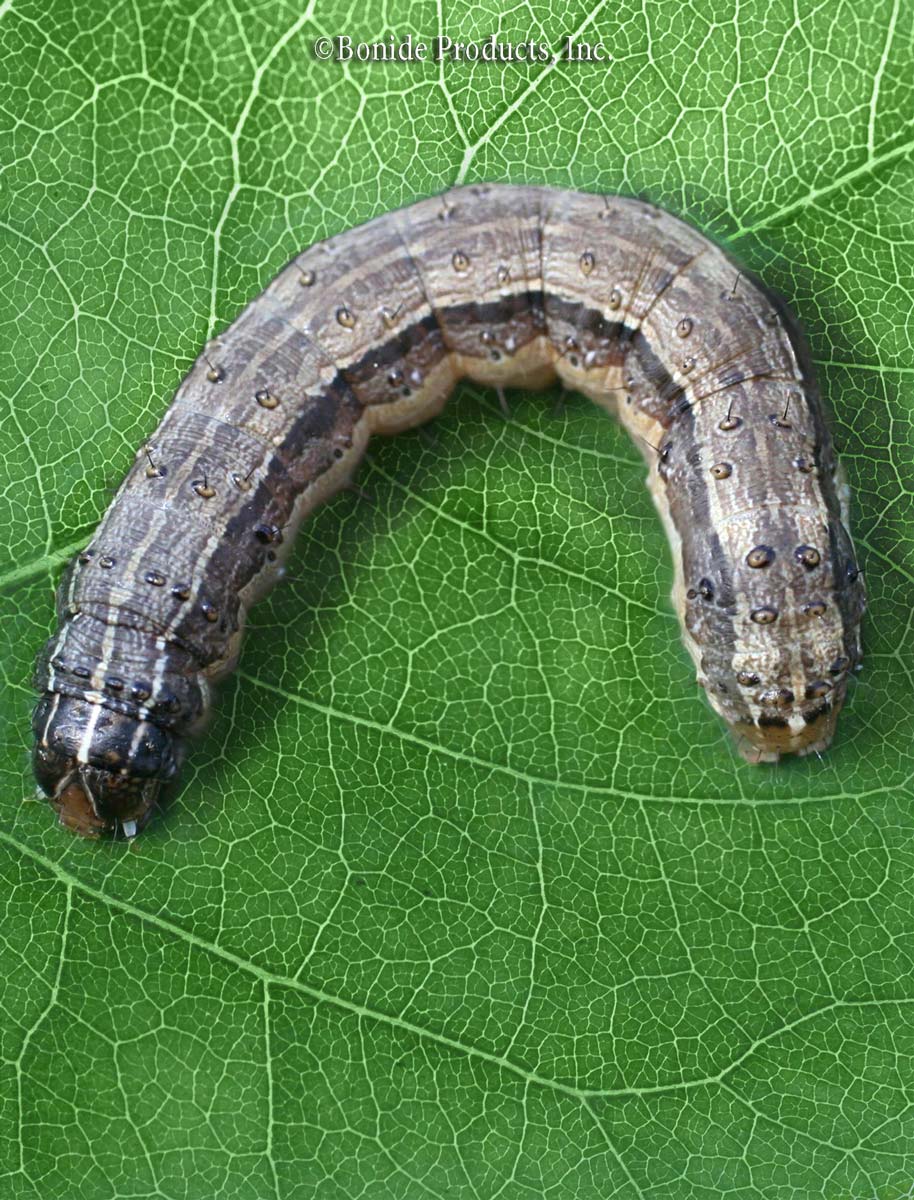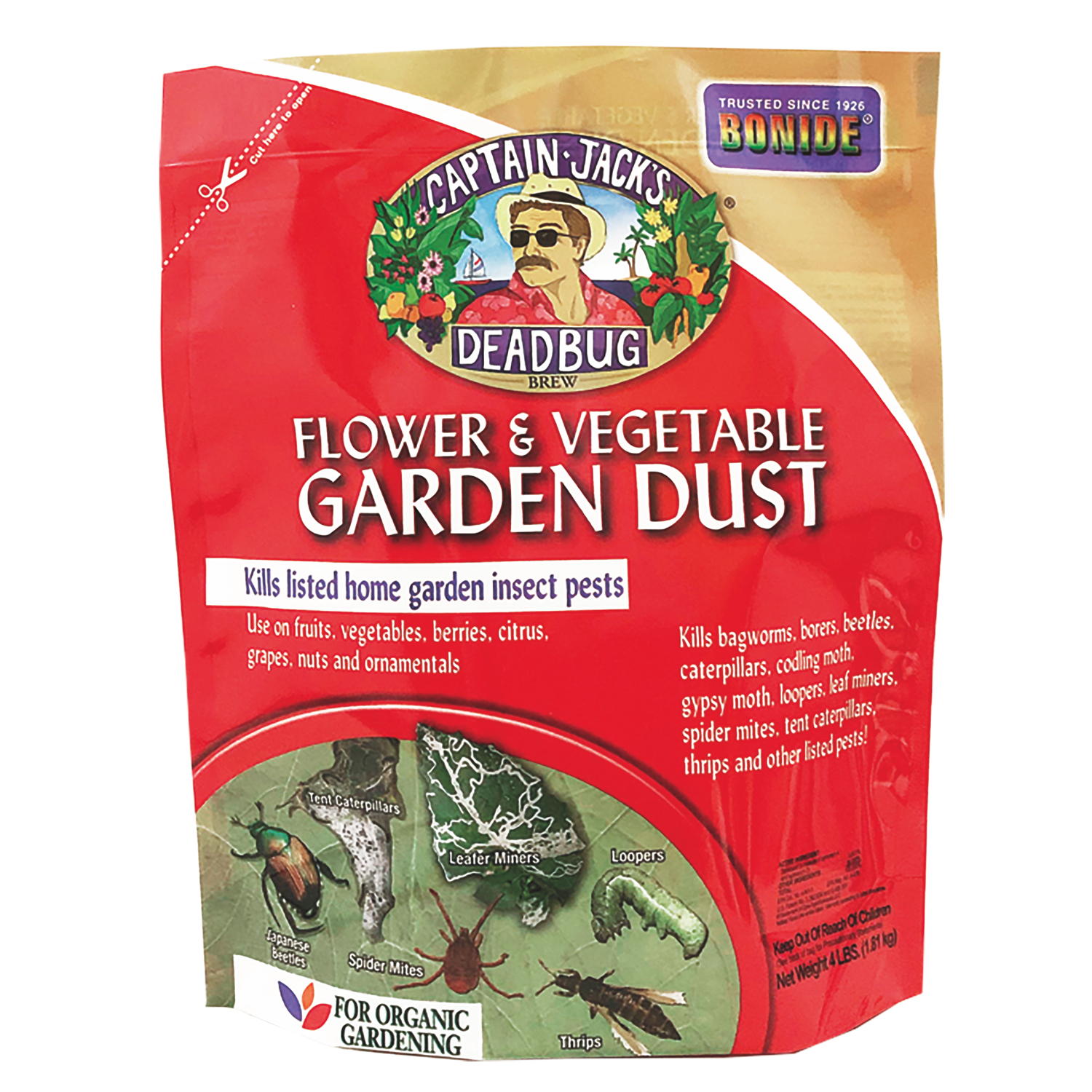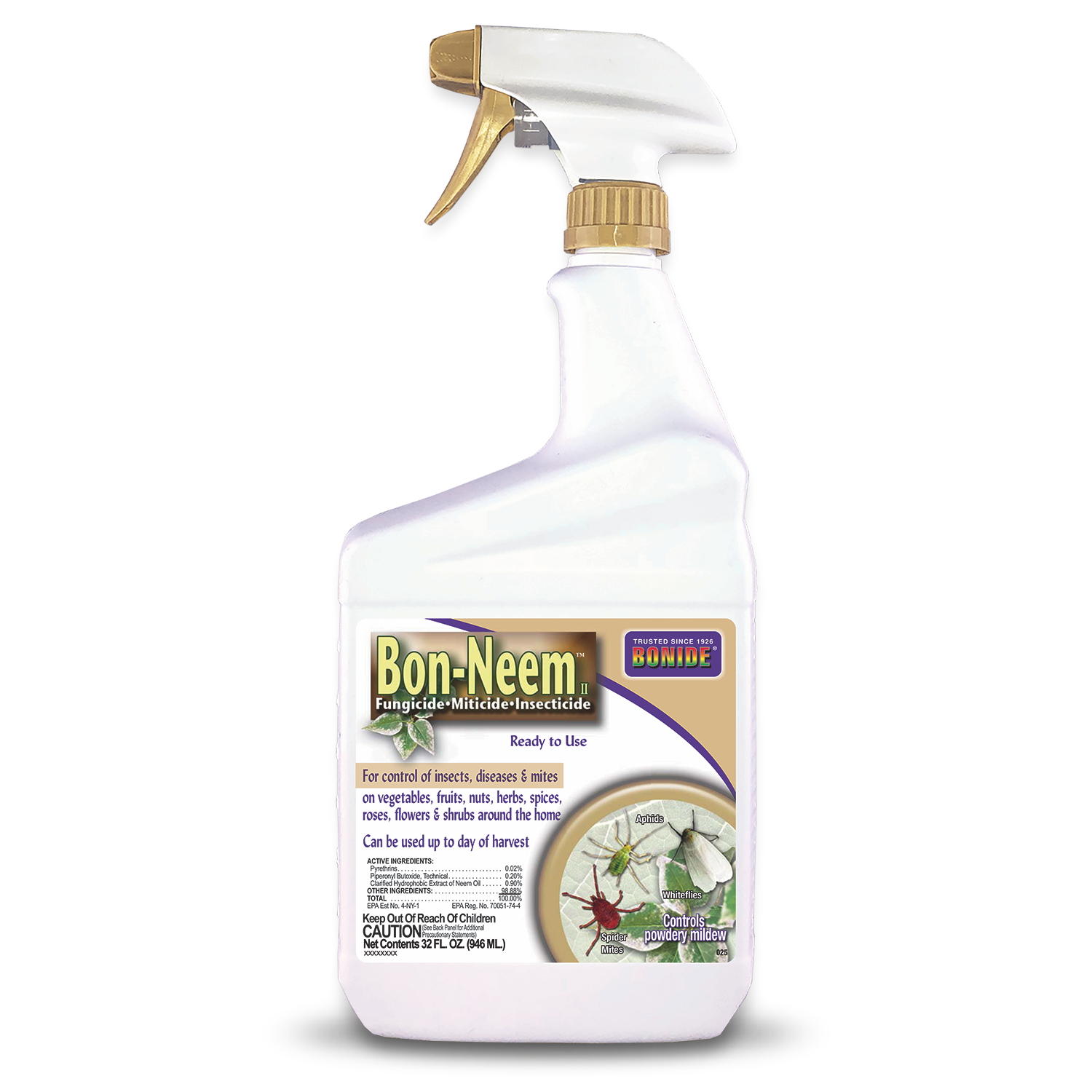
Active at night and on overcast days, armyworms get their name from their habit of marching in troops, devouring vegetation in their path. Several species of these hairless caterpillars cause headaches for gardeners; all are 1 to 2 inches long and fond of leafy vegetables. Beet armyworms, varying from green to black, sport a stripe down each side and a small black spot above the stripe at the middle pair of true legs. Yellow-striped armyworms are purplish to black, with two yellow stripes running along their backs. Brown shiny fall armyworms have prominent black spots and a white ‘”Y”‘ on a black head (Armyworms are also known as climbing cutworms).
Target: Vegetables, especially seedlings (fall armyworms favor corn), lawns.
Damage: Foliage is chewed (tips of corn leaves look ragged as they unfurl); seedlings are often destroyed. Grass dies in irregular patches.
Life cycle: Moths lay eggs on leaves. After hatching, the caterpillars feed for several weeks, then pupate in the soil. Beet and fall armyworms migrate north, reaching the upper part of their range in autumn. Depending on species and climate, there are one to six generations each year.
Notes: Get rid of grassy weeds, since the infestation often starts there. Dig a steep sided ditch at least 6 inches deep around the plants you want to protect; the armyworms will fall in, then be unable to get out.


















